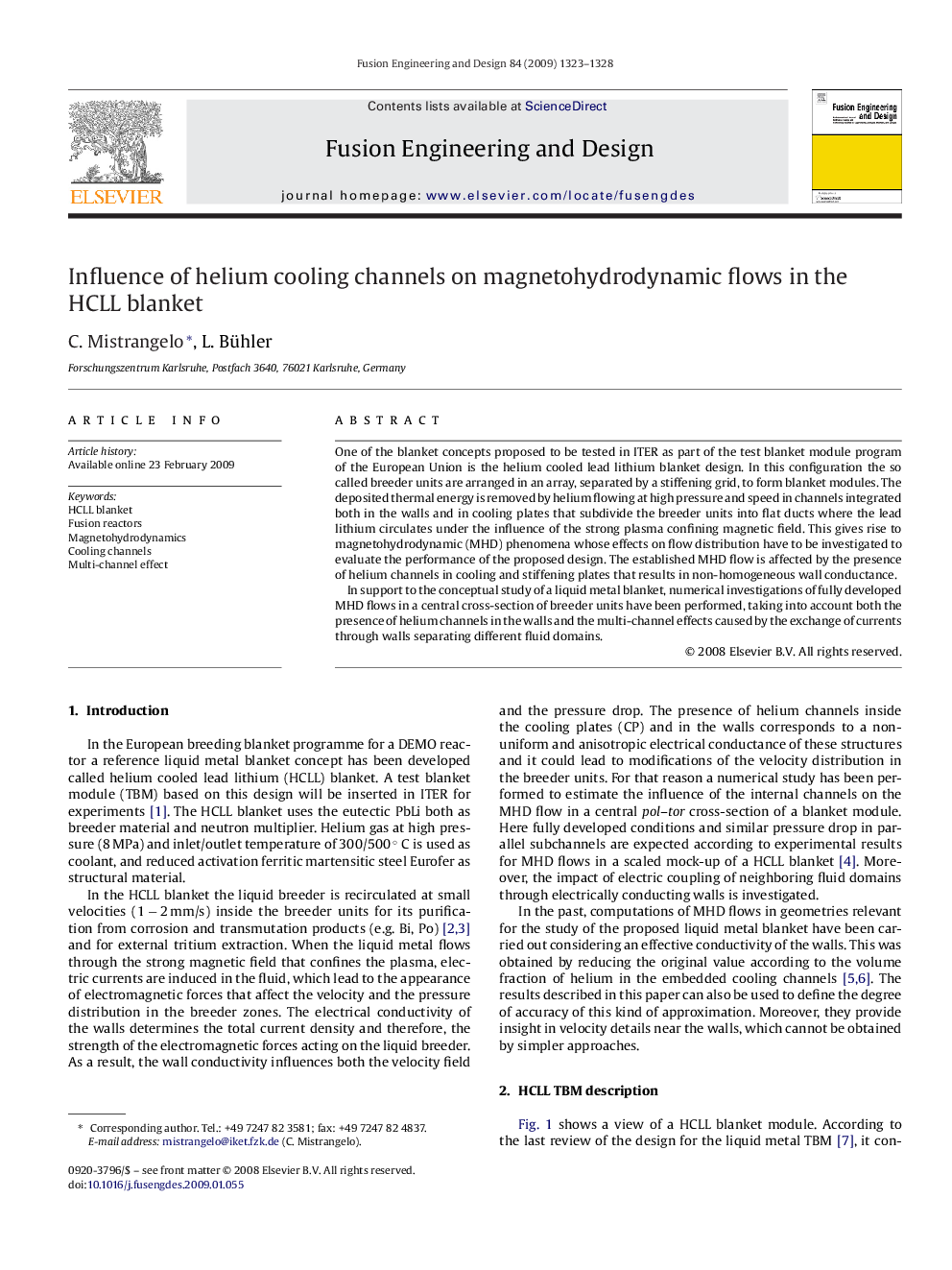| Article ID | Journal | Published Year | Pages | File Type |
|---|---|---|---|---|
| 273141 | Fusion Engineering and Design | 2009 | 6 Pages |
One of the blanket concepts proposed to be tested in ITER as part of the test blanket module program of the European Union is the helium cooled lead lithium blanket design. In this configuration the so called breeder units are arranged in an array, separated by a stiffening grid, to form blanket modules. The deposited thermal energy is removed by helium flowing at high pressure and speed in channels integrated both in the walls and in cooling plates that subdivide the breeder units into flat ducts where the lead lithium circulates under the influence of the strong plasma confining magnetic field. This gives rise to magnetohydrodynamic (MHD) phenomena whose effects on flow distribution have to be investigated to evaluate the performance of the proposed design. The established MHD flow is affected by the presence of helium channels in cooling and stiffening plates that results in non-homogeneous wall conductance.In support to the conceptual study of a liquid metal blanket, numerical investigations of fully developed MHD flows in a central cross-section of breeder units have been performed, taking into account both the presence of helium channels in the walls and the multi-channel effects caused by the exchange of currents through walls separating different fluid domains.
